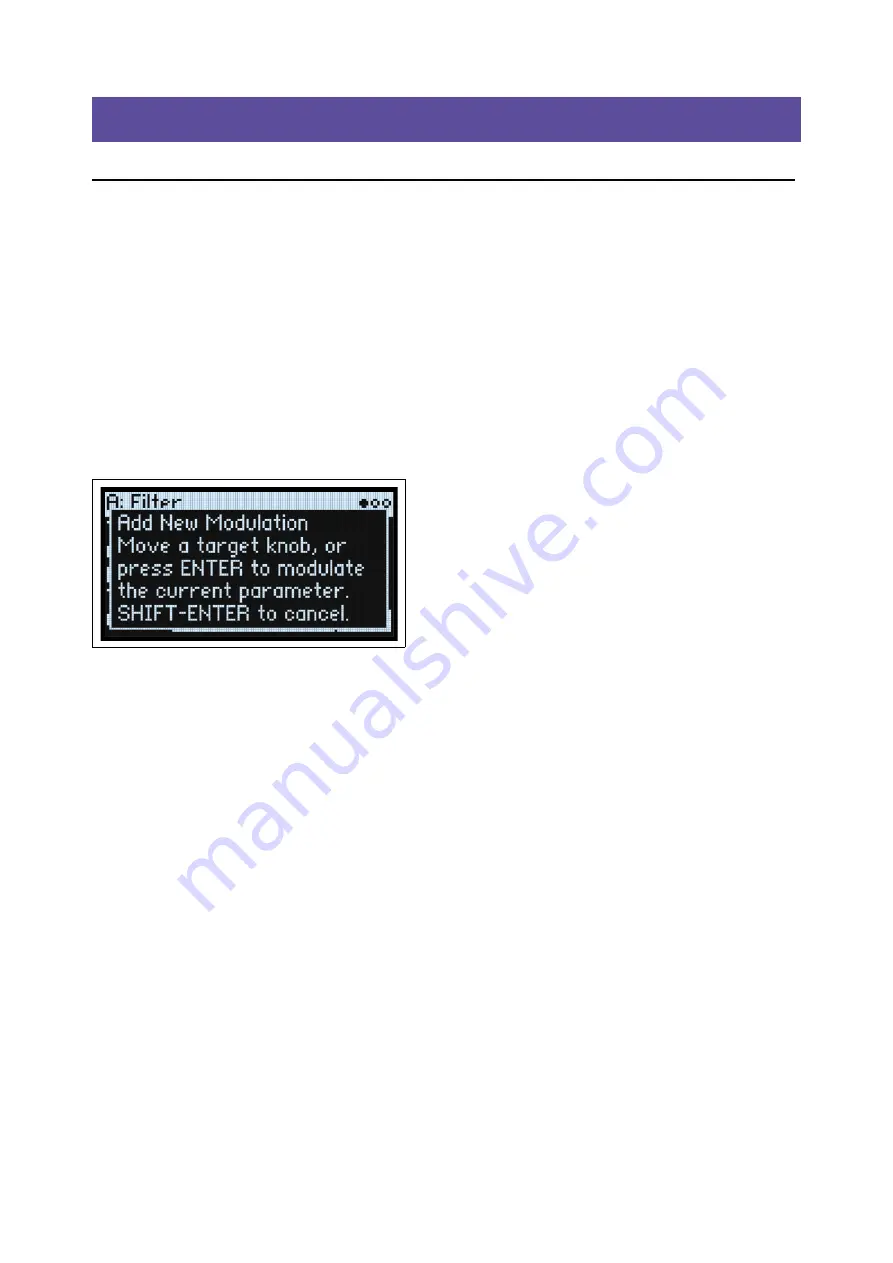
Modulation
64
Modulation
Using Modulation
Modulation Overview
Most front-panel controls and on-screen parameters can be modulated. You can also create multiple modulation
routings to the same destination. Each modulation routing includes a primary modulation source, an intensity, and a
secondary modulation source; the three are multiplied together to create the modulation amount. Once a modulation
routing is created, you can change either of the sources, but you cannot change the destination.
Adding Modulation Routings
To add a new Modulation routing:
1.
In the display, select the parameter that you’d like to modulate. (If you want to modulate a knob, you can skip
this step.)
2.
Hold
MOD
and press
>
.
The Add New Modulation popup appears.
3.
To select the modulation destination, move its front-panel control (e.g.,
CUTOFF
), or press
ENTER
to select
the parameter from step 1.
Note:
If the selected parameter cannot be modulated, a message will appear on the display and then the popup will
close.
4.
To select the modulation source, move a controller (e.g.
WHEEL 1
) or a
MOD KNOB
, play a note (for Veloc-
ity), press a button for one of the LFOs, Envelopes, or Step Seq Lanes, or send a MIDI CC.
Alternatively, if you want to use a mod source which can’t be selected from the front panel (such as Exponential
Velocity or Mod Processors), press
ENTER
and manually select the mod source in the following screen.
If the message “Chan Src Only” appears, the parameter cannot be modulated from per-voice sources such as LFOs,
envelopes, Step Seq Lanes, and Key Track. Choose a different modulation source.
5.
Press
ENTER
to create the mod routing, or
SHIFT-ENTER
to cancel.
The Mods page appears, showing the new routing.
6.
Set the Intensity as desired.
The maximum Intensity is typ/- the full range of the parameter, so that regardless of the programmed value,
modulation can always reach the minimum or maximum values.
7.
Optionally, assign a second modulator as the Int Mod Source (Intensity Mod Source), whose value multiplies
that of the main Source.
For example, you could route Step Seq Lane B to Multi Filter
Crossfade
, with the overall amount of the step sequencer
modulated by the Osc 1 LFO.
Filter/Osc Env Intensities, LFO Intensities, and Key Track Intensities
Modulation works slightly differently for these “Intensity” parameters. When you select them as a destination:
•
The modulation destination is set to the main parameter: Filter Cutoff, Amp Level, Osc 1 Position, etc.
•
The Source is set to the Envelope, LFO, or Key Track
•
The Intensity Mod Source is set to the selected modulation source (as selected in step 4, above).






























